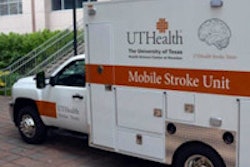A study by Lukas Havla and colleagues from the University of Munich applied a time-domain wavelet transform on time-resolved CT perfusion data to differentiate arteries and veins based on the scale information of the wavelet power spectrum (i.e., bolus dilation).
"Our study has the purpose of visualizing the cerebral vascular tree in clinical indications of, for example, suspected stroke," Havla wrote in an email to AuntMinnie.com. "In the latter case, clinicians agree on the value of CT perfusion maps additional to the conventional single-phase CT angiography sequence. However, taking into account the x-ray exposure to the patient of any CT examination, it is desirable to save radiation dose whenever possible."
There are already some applications to get the data from CT perfusion, but they are not yet robust enough to replace the angiography method, Havla explained.
After contrast administration, eight patients with suspected stroke were examined with MDCT systems that acquired 32 dynamic phases (temporal resolution, 1.5 sec) in 99 slices at 80 kV and 350 mAs. After rigid-body motion correction, wavelet power spectrum was calculated for each pixel, and its maximum value was defined as angiographic intensity.
The intensity data were calculated in the cerebral arteries and compared with the time-to-peak parameter obtained from CT perfusion data.
"Our results show that bolus dilation during the passage through the vascular tree is sensitively mapped by the wavelet scale parameter, thus providing a new supplementary parameter for the separation of arteries and veins in addition to the time-to-peak information," the study abstract states. "This information might be used to improve the suppression of venous superposition in angiographic data or to color-code arterial and venous vessels."



















